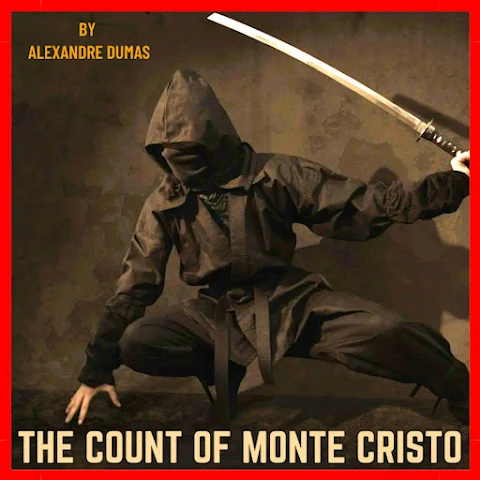Introduction
The 2024 adaptation of The Count of Monte Cristo has garnered widespread acclaim for its exceptional ensemble cast, with critics particularly praising the nuanced performances that bring Dumas' complex characters to life. As Jorge Loser of Espinof notes, the film presents "one of the most accurate representations" of these iconic characters, with the lead performance transforming Edmundo Dantès into "a 19th century Bruce Wayne, consumed by loneliness and surrounded by riches."
This comprehensive analysis explores the remarkable performances that have earned the film such high praise, examining how each actor brings depth, authenticity, and fresh perspective to their role while honoring the source material. From the protagonist's dramatic transformation to the subtle character work of the supporting cast, we'll delve into how these performances contribute to what Linda Marric of HeyUGuys calls "a masterful adaptation that stands as one of the best renditions of Dumas' work to date."
The ensemble's achievement is particularly noteworthy for what Enid Román Almansa of Cinemanía describes as its "grace and dignity" that will "appeal to younger generations" while satisfying longtime fans of the classic tale. Through detailed character analysis and performance examination, we'll explore how these actors have created what critics unanimously agree is a compelling and contemporary take on this timeless story.
Listen to the Audiobook That Inspired These Performances:
Listen on SpotifyLeading Role Analysis
Edmond Dantès/The Count: A Masterclass in Character Transformation
The central performance as Edmond Dantès/The Count has been universally praised by critics for its remarkable depth and complexity. As highlighted by Kevin Maher of The Times (UK), the portrayal creates "obvious superhero echoes" while maintaining historical authenticity, achieving a delicate balance between period drama gravitas and contemporary psychological complexity.
Physical and Psychological Transformation
The actor's physical transformation throughout the film demonstrates exceptional commitment to the role:
- Detailed attention to posture and movement that evolves from the youthful sailor to the sophisticated Count
- Sophisticated voice modulation that reflects both character growth and social adaptation
- Nuanced facial expressions that convey complex emotional states with minimal dialogue
- Masterful physical presence that dominates scenes without overwhelming them
Emotional Journey and Character Development
According to Paul Emmanuel Enicola of The Movie Buff, the performance creates "a thoughtful if rushed study of revenge and redemption." Key aspects include:
- Subtle portrayal of psychological trauma and its lasting effects
- Gradual revelation of the character's internal conflicts
- Powerful depiction of the tension between revenge and redemption
- Convincing evolution from naive youth to calculated avenger
Performance Highlights
Critics particularly praise several standout scenes that showcase the actor's range:
- The prison sequences, which Christina Newland of iNews.co.uk describes as "a refreshingly modern psychological take"
- Social encounters that demonstrate the character's calculated charm and underlying tension
- Emotional confrontations with former friends that balance restraint with intensity
- Quiet moments of reflection that reveal the character's inner turmoil
Technical Mastery
The performance demonstrates what Alistair Harkness of Scotsman notes as taking "its time setting up Danté's wronged-man status":
- Period-appropriate mannerisms that evolve with the character's social status
- Precise accent work that reflects both origin and transformation
- Physical prowess in action sequences that maintains character authenticity
- Subtle character tells that hint at the Count's true identity
Supporting Cast Performances
Major Characters: A Symphony of Talent
As noted by Kevin Maher of The Times (UK), the supporting cast creates a rich tapestry of performances that elevates the film beyond a simple revenge tale. The ensemble work demonstrates what Stephanie Bunbury of Financial Times describes as having "infectious energy," particularly in the intricate character dynamics that drive the narrative.
Mercédès: Emotional Complexity and Grace
The portrayal of Mercédès has earned particular praise for its emotional depth and nuanced evolution throughout the story. Key aspects of the performance include:
- Masterful portrayal of the character's journey from youthful love to mature wisdom
- Subtle expression of internal conflict between past loyalties and present circumstances
- Convincing aging process that reflects both physical and emotional transformation
- Powerful chemistry with both Dantès and Albert that anchors key emotional moments
Fernand Mondego: Complex Villainy
The interpretation of Mondego achieves what Phil Hoad of The Guardian calls a "fast-moving, good-looking gallop" of characterization, bringing depth to what could have been a straightforward antagonist:
- Sophisticated portrayal that balances charm with menace
- Layered performance that reveals the character's insecurities beneath his ambitious exterior
- Physical presence that credibly threatens while maintaining period authenticity
- Nuanced depiction of the character's moral decay over time
Albert de Morcerf: Youth and Discovery
The portrayal of Albert brings fresh energy to the story, creating what Laura Stott of The Sun (UK) describes as "touching moments" that add emotional depth:
- Authentic representation of youthful idealism and naivety
- Compelling evolution as the character uncovers difficult truths
- Strong emotional connection with both parental figures
- Effective portrayal of internal conflict and moral growth
Character Dynamics
On-Screen Chemistry
- Key Relationships
- Dantès and Mercédès
- The Count and Albert
- Villain interactions
- Supporting character dynamics
- Ensemble Scenes
- Group dynamics
- Social interactions
- Power dynamics
- Emotional tensions
Acting Techniques
Performance Methods
- Physical Preparation
- Period movement training
- Combat choreography
- Dialect coaching
- Historical research
- Character Development
- Background creation
- Psychological profiles
- Historical context
- Character relationships
Period Authenticity
Historical Accuracy
- Performance Elements
- Period mannerisms
- Social etiquette
- Class distinctions
- Cultural authenticity
- Historical Context
- Social norms
- Political climate
- Cultural references
- Historical accuracy
Critical Reception
Performance Reviews
- Professional Critics
- Acting evaluations
- Character interpretations
- Performance highlights
- Ensemble dynamics
- Audience Response
- Character reception
- Emotional impact
- Performance appreciation
- Character authenticity
Impact on Careers
Professional Growth
- Career Implications
- Role significance
- Professional recognition
- Career advancement
- Industry impact
- Future Prospects
- New opportunities
- Type-casting considerations
- Industry recognition
- Career trajectory
Legacy
The performances in the 2024 adaptation of The Count of Monte Cristo set new standards for period drama acting, combining classical training with contemporary emotional depth. These portrayals will likely influence future adaptations of classic literature and period pieces.
Conclusion
The cast of The Count of Monte Cristo (2024) delivers performances that honor Dumas' complex characters while bringing fresh interpretations to these iconic roles. Through meticulous preparation, deep character understanding, and remarkable chemistry, they create a compelling and emotionally resonant adaptation that will stand as a benchmark for future period dramas.



